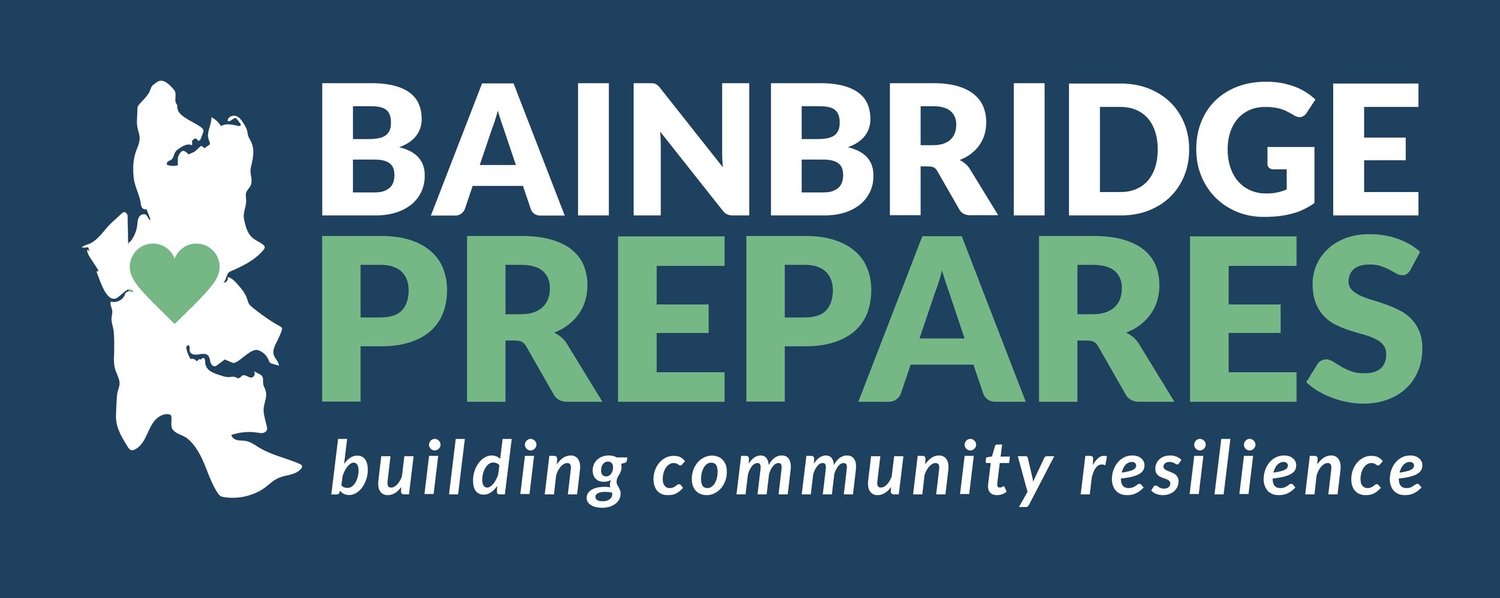FEMA Identifies the Gaps in Household Preparedness Levels
FEMA logo
More than 7,000 people participated in FEMA's 2022 National Household Survey, which measured preparedness for four specific natural hazards (avalanche, extreme heat, landslide, and pandemic) and three human-created hazards (active shooter, chemical emergency, and cyberattack). The results of the survey highlight some key areas of underpreparedness in the American people.
Reluctance to Collaborate
The survey found that people are less likely to work with others—such as their neighbors—to prepare than they are to take other steps. Among the preparedness actions that respondents took the least were “plan with neighbors” and “get involved in your community.”
This is a problem here on Bainbridge Island where the foundational principles of the community's preparedness approach is (a) to prepare one's household and (b) to prepare with one's neighbors. The Map Your Neighborhood program is built upon the idea that neighborhoods will organize and respond first after a disaster: People will check on their neighbors, secure the neighborhood (such as by turning off propane), and help the injured get to emergency hubs.
Fear Without a Sense of What to Do
The survey found that people are more aware of the risk to them of specific hazards than they are of what to do about those hazards. Indeed, the preparation element often seems difficult, unclear, or too expensive. That's one reason we have been sharing the Washington State Military Department (WSMD) simple one-year guide—Prepare in a Year—to help people tackle one task per month. To access our series of articles, search on our site for Prepare in a Year.
A Lack of Will
A significant percentage of respondents showed low or no intention of preparing for specific hazards. More than 30 percent of people who lived in areas identified as at-risk to avalanches, landslides, and chemical emergencies stated that they had no intent to prepare for those specific hazards.Do you know what your risk is in Kitsap County? The FEMA National Risk Index gives our county a moderate level of risk overall but relatively high for earthquake and landslide.
Subcommunity-Specific Gaps
The survey also identified differences among communities in terms of their preparedness. For example, senior citizens are more likely than younger people to be prepared in terms of gathering supplies but less likely to participate in emergency drills. People who are socioeconomically disadvantaged are more likely to participate in drills but less likely to gather emergency supplies.
Following are the articles we have published so far on getting ready in a year. It's never too late to start preparing.
https://bainbridgeprepares.org/2023/01/17/prepare-in-a-year-month-1-make-a-communications-plan/
https://bainbridgeprepares.org/2023/02/06/prepare-in-a-year-month-2-make-an-action-plan/
https://bainbridgeprepares.org/2023/03/13/prepare-in-a-year-month-3-build-a-water-supply/
https://bainbridgeprepares.org/2023/04/03/prepare-in-a-year-month-4-create-a-grab-and-go-bag/
https://bainbridgeprepares.org/2023/05/15/prepare-in-a-year-month-5-gather-important-documents/
https://bainbridgeprepares.org/2023/06/08/prepare-in-a-year-month-6-get-three-weeks-ready/
https://bainbridgeprepares.org/2023/07/18/prepare-in-a-year-month-7-get-fire-safe/

